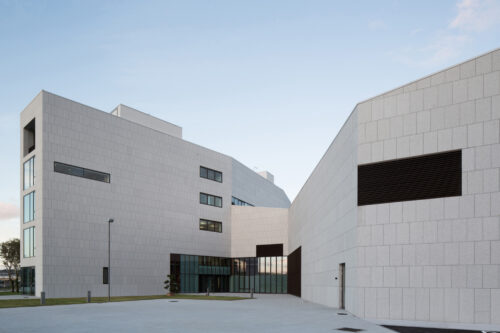Cork - A Place I have always loved working in Cork; to build there is to build in a magical place. Cork has the most beautiful relationship between geography and urbanity in the world- it is formed around water, and exists because of it and in spite of it. The city map itself is a contract with the sea, running from the Mardyke (meerdyke or sea dyke), to the city- its whole complex plan of streets, bridges and spaces made up of small grids on pre-existing channels and low islands, then on to the Harbour and the wider world. In Cork, the city extends well beyond the centre; it is about the river downstream and its small towns and villages, the river widening and narrowing until it explodes out into the majestic harbour with its big-boned modern facilities guarded by remarkable 18th and 19th century fortifications and stone beacons- a mix of entirely technological and completely ancient things, both protection and memorial. Much of the changing beauty- and tension- of the river is precisely about the battle between land and water, centuries of land being pushed out, with sections lined and infilled against constant erosion, the rubbing away, falling in and inundation that constantly changes the landscape.
Cork, Ireland
Cork, Ireland
The river Lee- and the erosive action of water- were core to the ideas in the design of the Beaufort Maritime and Energy Research Laboratory; in Ireland, we do not play on or think enough or ask questions about the most extraordinary things around us; making a facility for this purpose in a Cork setting, on the river, made this an essential part of the exploration. This is also about the relationship between architecture and geography- and, in particular, the very specific geography of Cork. The building- a national centre for maritime and wave energy research -was first a building about exploring sustainable issues made by a University dedicated to providing a lead in sustainable thinking. The Beaufort is located in Ringaskiddy on a mixture of newly formed land and original foreshore -a tall research block stacked to the sea and a large tank hall with testing facilities behind it, its plan form driven by the size and relationship of the four tanks, used alternately still or agitated, with paddle mechanisms and profiled floorplates to simulate wave action, coastal erosion, ocean floor modelling.
This is a space beside wild water containing still water artificially manipulated by human action; the researchers sit in the ‘head’ of the building emerging from the landscape, high up in single and double-height rooms balanced between the natural sea and the artificial one. Ringaskiddy is built like a stone outcrop subject to the action of water, like a rock by the river; its position adjacent to the harbour mouth makes it like a cliff wall on the waters edge, a monument to departing shipping and a form marked by the constant action of wind. The tank hall roof is geometrically resolved as a series of mathematically generated planes triangulated into different slopes, reflecting the Z-shaped swing of the trusses over the tanks mapped onto the fixed points of the workshops; they present a frozen version of the artificial waves beneath. The overall form and surface are deeply indented; surface volumes of the research tower are eroded on north and east facades, analogous to the action of wind and water on driftwood, generating a series of indented planes on the elevation to the sea for windows and balconies.
- section through tank hall
Apart from its essential function in exploring alternative energy sources, the building incorporates sustainable principles in construction and orientation; stacked shallow breathable plans in the research tower are countered by the large volume unheated tank hall; exposed concrete soffits provide thermal mass to assist passive cooling of laboratories; high performance glazing ensures generous levels of natural light; the large roof surface acts as a perfect rain water harvesting surface. These are embedded principles.
On the wider level, if the purpose of these papers is to create a discussion on the future sustainability of our cities, Cork is the perfect focus. This city has character in a way that other Irish cities have lost; it has memorable views and dense urban quarters, mixed typologies, interesting public buildings. It feels lived–in, big enough to get lost in, to have places to find, for specialization to develop, yet small enough for sustainable initiatives about personal transport or pooling resources to make sense. Everywhere, its architecture and public space relate to the river and the hills. In all of the 21st century conversations about sustainability and new ideas about combating waste, maybe not enough attention is paid to one core aspect- the maintenance and use of a city’s particular fabric. In Cork, this varied tissue of old walls, materials, people, means of occupation, habits, internal and external rooms gives the city its identity, its specific gravity. It encodes its special history, its relationship to geography- its sense of place. As elsewhere in Ireland and Europe, this fabric and use is under stress; there are economic pressures, and, increasingly, the weight of unmediated regulation excluding options for integrated urban lives. In Ireland, much time is expended trying to define new answers to problems, skating brightly over the surface because the old issues are too difficult to solve. Core sustainability should include more support for those working to find integrated ways of conserving and finding appropriate uses for the full extent of the historic fabric- ie., networks of city quarters not selected Protected Structures- as well as ways to make the great new architecture that such vigorous communities would require- appropriately, with judgment and sanity, looking after the ordinary as well as the special.
—Valerie Mulvin, The Cork Papers





